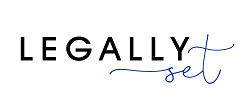Is DEI (Diversity, Equity, and Inclusion) under attack?
In the past year—and especially in the past week, following President Trump’s recent executive orders targeting diversity, equity, inclusion, and accessibility (DEIA) initiatives, have been thrust into the spotlight.
Companies are suddenly putting out statements about DEI left and right. With threats to cut funding for organizations focused on anti-racism work to public figures speaking out against efforts for greater representation, the message might feel loud and clear: DEI is under attack.
But here’s the thing: the need for inclusive spaces and fair opportunities is still very much needed. Diverse perspectives still make communities stronger making this work is more important than ever.
Businesses and business owners thrive when everyone has a seat at the table. So, how do we, especially as entrepreneurs, keep pushing for DEI in the face of resistance?
Let’s break it down in a way that’s clear, actionable, and (dare we say) a little easier to tackle.
1. Identify Your Core Values
When the world feels chaotic, go back to the heart of it all: Why does DEI matter to you or your business?
- Make it personal: Stories are powerful. Maybe you’ve seen how a more inclusive team boosted collaboration or how a conference learning from different perspectives has helped you. Share those wins—it reminds everyone why this work matters.
- Practice what you preach: Your actions should align with your values. If fairness and respect are your guiding principles, make sure they show up in your policies and everyday interactions.
- Examples:Choose if you want to attend conferences that don't diversify their speaker platform, vote with your dollars by choosing if you want to shop from companies that don't align with your values, etc.
2. Think Bigger About DEI
DEI isn’t just about race—it’s about gender, age, disability, sexual orientation, and so much more. The more inclusive your definition, the better your impact. It’s not just the right thing to do—it’s smart business.
- Look at the whole picture: People’s identities overlap. Understand that people often belong to multiple marginalized groups at once (example: someone might be a person of color, LGBTQ+, and living with a disability). Addressing discrimination in one dimension can’t ignore the overlapping biases that others experience.
- Show the business benefits: Data sometimes works better than anything when there are others who need convincing. Collect and share the data.
- Example: Diverse teams are better at innovation and problem-solving, here's the data to prove this.
3. Make Inclusion an Everyday Practice
A one-and-done training isn’t going to cut it. True DEI happens when inclusivity is part of your everyday culture.
- Ways to do this: Use inclusive language, offer flexible work options, and create spaces where everyone feels heard.
- Get creative: Can’t host formal DEI training? Try a book club, a discussion group, or even a team workshop that explores these topics in a less formal way.
4. Create Safe Spaces
Talking about discrimination can feel risky, especially in a tense climate. Your job is to make sure people feel safe speaking up.
- Clear support systems: Let your team know they can report concerns confidentially—and follow through when they do. Allow members of communities you host to submit feedback.
- Encourage empathy: Instead of “calling people out” for mistakes, focus on “calling them in” with kindness and education. This keeps the conversation open and productive.
5. Active Allyship
Allyship isn’t just a buzzword—it’s a game-changer. Allies can use their privilege to support those who face bias or discrimination.
- Start at the top: Leaders set the tone. When executives and managers openly back DEI efforts, it sends a strong message that this work matters.
- Empower everyone: Encourage your team and/or community to speak up when they see exclusion or bias. It could be as simple as pointing out whose voices aren’t being heard in a meeting, at a conference, or in every day life.


